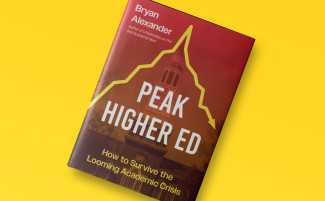Guest post by John Eric Goff
Earth’s greatest sporting event is under way in Brazil with the World Cup, which began last Thursday with a match between the host nation and Croatia. The United States opens play today against Ghana. Just making the final draw is an honor for any country’s national team. For all the hard work that goes into getting a team to Brazil this summer, only one will stand atop the soccer world on July 13. What soccer fans may not appreciate is all the science enlisted to elevate the World Cup to as high a level as possible. Let’s play with some of the physics behind the new Brazuca ball.
Adidas has provided the ball for the World Cup since 1970. Always a source of excitement and controversy, each World Cup’s ball not only represents a chance for a charismatic design, but an opportunity to showcase the best science has to offer. Up through 2002’s World Cup in Japan and South Korea, balls had the traditional 20 hexagons and 12 pentagons that most of us kicked around as children. Though it may seem counterintuitive, the seams that connect the 32 panels and make for a less-than-smooth surface actually improve the ball’s aerodynamics. Were golf balls not dimpled and baseballs devoid of seams, they would not travel nearly as far as they do.

When Adidas introduce the Teamgeist to the 2006 World Cup in Germany, players met a ball with 14 thermally-bonded panels. Fewer rough areas meant the aerodynamics changed a bit. Because the Jabulani ball used in South Africa for the 2010 World Cup had just eight panels, Adidas had to texture the surface to restore some roughness. That ball, however, was the subject of player complaints because of strange knuckling effects associated with the lateral wobble of balls with little to no spin. Adidas has done much better for 2014.
Players in Brazil are using the Brazuca ball, which has just six panels. Like Jabulani, Brazuca was intentionally textured to add surface roughness. What makes Brazuca better than Jabulani is its total seam length. Despite having two fewer panels, Brazuca’s boomerang-shaped seams give it a 68% longer total seam length compared to Jabulani. That increased total seam length means Brazuca’s surface is both rougher and more uniform than Jabulani’s. A lower-speed “drag crisis” means Brazuca should have more stable trajectories that what goalkeepers had to contend with four years ago.
Now, what is a “drag crisis”? A soccer ball moving through air is slowed by air drag. Stick your hand out the open window of a moving car and you’ll immediately meet air drag first hand. As a ball kicked at a relatively high speed slows down while experiencing air drag, air flow around the ball changes from “turbulent” to “laminar.” When that transition, or drag crisis, occurs, there is a precipitous increase in air drag. The speed at which that transition happens is everything on the soccer pitch.
I recently published a comparison study of Jabulani and Brazuca aerodynamics with my colleagues Takeshi Asai and Sungchan Hong at the University of Tsukuba. Wind-tunnel experiments show that the drag crisis for a Jabulani happens at a speed of about 54 mph, whereas the corresponding speed for Brazuca is around 38 mph. What that means is that a Jabulani kicked at an intermediate speed will be right in the teeth of its drag crisis. An intermediate-speed kicked Brazuca will be past its drag crisis. For balls kicked at high speeds, goal keepers will notice little difference between Jabulani and Brazuca.
Consider, for example, a free kick from 20 yards out. The ball is kicked at an intermediate speed of 45 mph at 22 degrees above the horizontal. Because Jabulani will experience more air drag than Brazuca, the Jabulani ball will pass the goal plane about a yard lower to the ground compared to where the Brazuca ball will pass the goal plane. That’s quite a difference in trajectories! Luckily for all the World Cup players, especially the goalkeepers, they’ve been able to play with the Brazuca ball in advance of the World Cup.
The fun continues for another four weeks. Revel in pride as you watch your favorite team, but also keep an eye on the flight of the Brazuca. The hope is for more flight stability compared to four years ago.
 John Eric Goff is Professor of Physics at Lynchburg College and the author of Gold Medal Physics: The Science of Sports
John Eric Goff is Professor of Physics at Lynchburg College and the author of Gold Medal Physics: The Science of Sports




